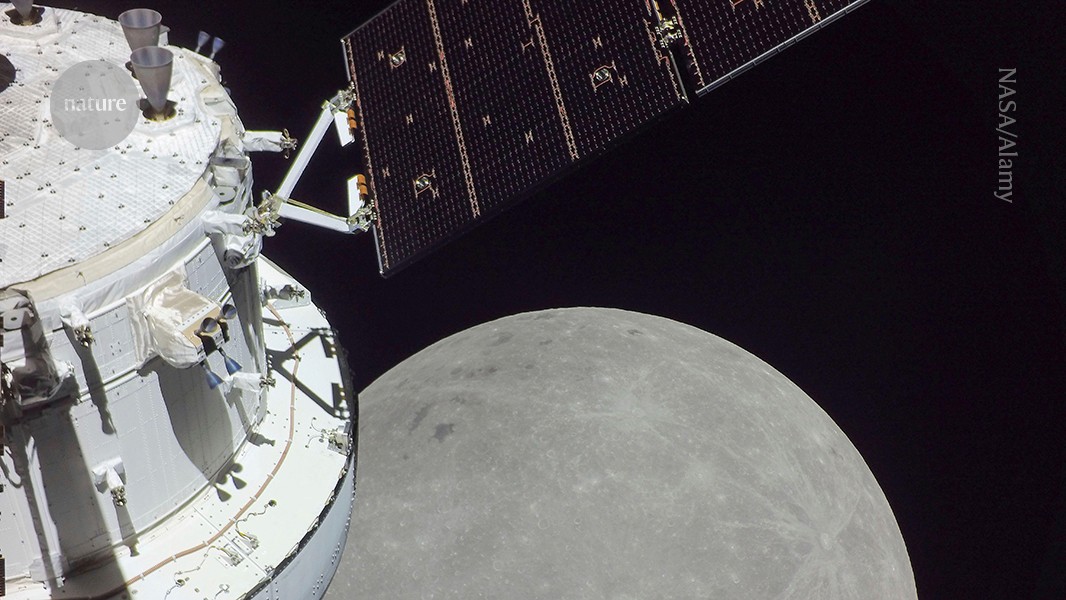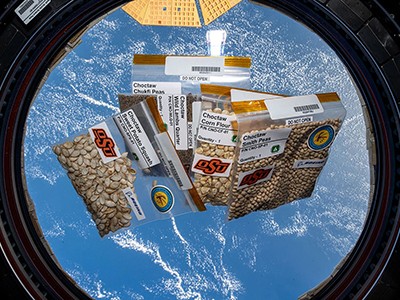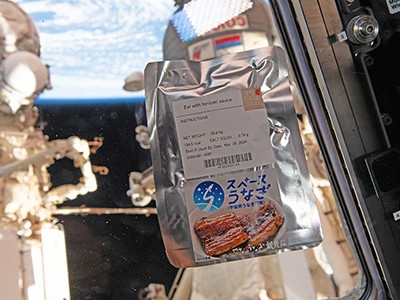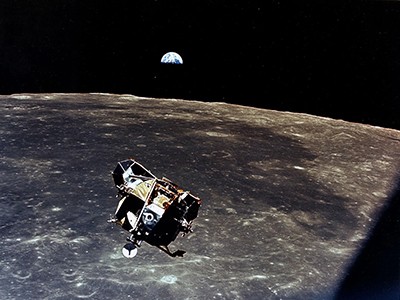The past two years have seen a series of milestones in lunar exploration. In February 2024, a commercial lander built by Intuitive Machines in Houston, Texas, did what only superpowers had achieved before: touch down on the Moon and deliver NASA science payloads. Four months later, China’s Chang’e-6 returned the first samples from the far side of the Moon, a site that China plans to build a radio telescope on, in partnership with African nations.
Why space exploration must not be left to a few powerful nations
The next few years could be just as momentous. In the United States, President Donald Trump proposed US$7 billion for lunar exploration in 2026. His administration’s 2027 priorities go further, calling for investments that “unlock new mission capabilities, enable discoveries, and achieve exploration goals”, including nuclear power, local-resource use and biotechnology in space (see go.nature.com/4812vla).
It’s a new era for space exploration, motivated by a mix of geopolitics, potential commerce and discovery. Establishing humans on the Moon, Mars and beyond is no longer just an aspiration: it is driving strategies, markets and missions today.
The Artemis Accords — a shared set of principles to enhance the governance of civil exploration and use of outer space — had been signed by 59 nations as of October. Yet science is being left behind. Ensuring that space ambitions remain science-driven is essential if exploration is to yield knowledge and innovation.
As an astrophysicist who has worked across government, academia and philanthropy, here I argue that scientific inquiry must guide and shape this next wave of space exploration; I set out five priorities for action. What happens in the next few years will define our future.
Embed science in partnerships
In space, science is the compass that ensures exploration yields lasting value. As a first step, partnerships between academia, government, industry and philanthropy that are focused on space exploration need to be built — with science in the driving seat. These can align around a shared purpose: missions that deliver both knowledge and scientific and technical progress.
Everyone benefits. The record shows that when science leads, it multiplies returns: innovation thrives; economies grow; and national strategies and international partnerships strengthen and drive advances in technologies. For example, Skylab, the first US space station, advanced solar power for human space flight. The Hubble Space Telescope includes modular components that can be replaced or upgraded, demonstrating how modular hardware can enable maintenance in space. The International Space Station is a joint effort between countries including the United States and Russia, demonstrating how scientific partnerships are invaluable for diplomacy.
Many national space agencies, and increasingly private actors working in partnership with them, are planning to establish a sustained human presence on the Moon and chart a path toward Mars (see ‘Window of opportunity’). This Moon-to-Mars era must follow past precedents of scientific diplomacy. It must also ensure that scientific return is a core design principle: shaping missions, payloads and infrastructure from the outset, not as an afterthought. If scientists show up early with clear priorities and mission-ready payloads, industry can integrate them, governments can align policy and philanthropy can bridge funding gaps.
For example, NASA’s Commercial Lunar Payload Services (CLPS) initiative exemplifies this new model by procuring delivery services from industry to send science and technology payloads to the Moon more quickly. Yet its commercial timelines and contract structures often lock in technical parameters before science teams can shape key elements such as site access, contamination control and interface standards. If this initiative and other lunar delivery efforts, such as the European Space Agency’s (ESA’s) Argonaut lander or India’s Chandrayaan missions, are to realize their potential, scientific leadership must move upstream in decision-making: shaping selection of landing sites, contamination-control methods and data policies before contracts are signed.
Philanthropy can help by financially backing high-risk, high-reward demonstration projects, supporting open-data challenges and creating fellowship programmes that link scientists to commercial payloads. Foundations such as the Breakthrough Initiatives, Washington DC-based Carnegie Science, and Schmidt Sciences and the Simons Foundation, both in New York City, have already catalysed such advances in ground-based astronomy. Similar partnerships must now anchor space exploration in open data, shared tools and talent pipelines.
Why space foods aren’t just for space
Industry, too, stands to gain. When scientific needs drive standards — for example, reducing exhaust-plume pollution to avoid sample contamination, or minimizing electronic noise to enable radio astronomy — the resulting systems are more robust, interoperable and exportable. The first companies to align with such standards will shape the global supply chain for space development.
When scientific requirements shape infrastructure, they improve reliability and operability. A lander or relay network built within scientific tolerances will outperform one optimized only for cost or speed. Science thus becomes not a constraint, but a competitive advantage.
Policy can lock in these incentives. For publicly funded lunar and Mars flights, space agencies should reserve a share of payload mass (perhaps 20% or more) for competitively reviewed science projects and require that data are made open within six months of landing. They should tie award fees to science-readiness metrics, such as low radio noise, not just to delivery. Internationally, agencies should set up a science coordination forum under existing frameworks, such as the Artemis Accords, to align emission standards, relay-satellite pointing and site-protection rules.
Recognize the Moon’s significance
The Moon is more than a stepping stone to Mars and beyond — it is a destination uniquely suited to conducting research. Unlike Earth, it has no atmosphere, liquid water or plate tectonics to erase its history. Its surface is a natural archive of roughly 4.5 billion years of Solar System evolution: from planetary formation and asteroid bombardment to solar and cosmic radiation preserved in the lunar soil, or regolith.
Polar craters might contain water ice and organics deposited by ancient comets. Such records could reveal where Earth’s volatile compounds, such as water, came from; whether life’s precursors were common; and how habitable environments emerged. The far side of the Moon is the only place in the inner Solar System that is shielded permanently from radio signals from Earth, making it a unique site for probing the distant Universe and searching for signs of extraterrestrial life.
How to chart a moral future for space exploration
The lunar surface could host observatories that are impossible to have elsewhere. For example, long-baseline interferometers (devices that combine input from multiple telescopes) operating at visible and ultraviolet wavelengths — ones that would be absorbed by the atmosphere on Earth — could image the surfaces of stars1. By detecting ground vibrations from moonquakes and impacts, seismic arrays might map the Moon’s interior. Networks of reflectors could bounce back laser beams from Earth to test fundamental physics and theories of the Earth–Moon system2.
Yet these opportunities are fragile. Rocket exhaust, dust and drilling can contaminate pristine deposits at the lunar poles. Communications satellites orbiting the Moon could spill signals that erase the far side’s radio silence. If scientists simply wait their turn, these crucial sites will be disturbed permanently by others.
Moreover, what is constructed on the Moon now will define what is built everywhere else in space. Choices regarding communications, power and mobility infrastructures will shape what science is possible on the lunar surface and beyond, to Mars, asteroids and deep-space orbital platforms.
The window for action is now: hardware is flying, sites are being chosen and norms are embedded in contracts and operations. Scientists must step up and study the Moon intensely over the next few years, before it’s too late.
Fly payloads that are ready now
Despite growing investment in space exploration, many research opportunities remain untapped because instruments are stuck in outdated bureaucratic cycles. NASA’s science budget is expected to face drastic cuts in 2026 and 2027, as federal funds are shifted towards human exploration. Many science missions have long time frames, with launches planned for decades from now, a far cry from the fast and furious approach of the commercial space sector. This cadence gap means that valuable lunar sites could soon be developed without scientific involvement.
The fix is simple: fly scientific pathfinder payloads now. Iterate fast, learn fast and scale up what works. Announce payload-delivery opportunities on a rolling schedule that is aligned with confirmed flight windows — then scientists can plan and apply on a predictable cadence.
Commercial off-the-shelf parts make it possible to build and fly viable research missions quickly and at a fraction of the cost of bespoke ones. Compact seismometers, neutron spectrometers and radio antennas can hitch rides on commercial landers or piggyback on communication relay satellites. Such projects would complement NASA’s billion-dollar flagship missions and, crucially, ensure that scientists bank essential measurements before lunar environments are irreversibly altered.
Potential projects abound. Radio experiments on the lunar far side and prototype optical or UV interferometers could open the way for future experiments. Lightweight seismic and heat-flow sensors can refresh Apollo-era models of the lunar interior, guide the design of human habitats on the surface and constrain moonquake hazards for future infrastructure. Miniature drills and spectrometers could sample volatile compounds that are frozen at the Moon’s poles, revealing how water and organic molecules were delivered.
The challenge is coordination. Governments should prioritize ready-to-fly payloads through streamlining of funding channels and speeding up review. An annual budget of at least $1 billion in the United States would match the current pace of commercial international launches. Promising collaboration models include NASA’s Lunar Surface Instrument and Technology Payloads initiative, which selected a dozen instruments in 2024 for short-term delivery, as well as ESA’s Open Space Innovation Platform and Japan’s JAXA small-mission calls.
A $50-million philanthropic programme could deploy a dozen small spacecraft for solar physics and planetary sampling or fund a fine-resolution lunar map. Such investments echo how private foundations once underwrote early radio telescopes and genome sequencing: short-cycle, high-risk and catalytic projects.
As data volumes from lunar sensors grow, fresh partnerships are pioneering innovative data handling and storage — from relay-based computing on lunar and Martian networks to the first orbital data centres being developed by firms such as Starcloud in Redmond, Washington, among others.
Build to fit scientific needs
In space, infrastructure is policy. Choices about how and where we build will determine not only what science is possible, but also who can do it.





